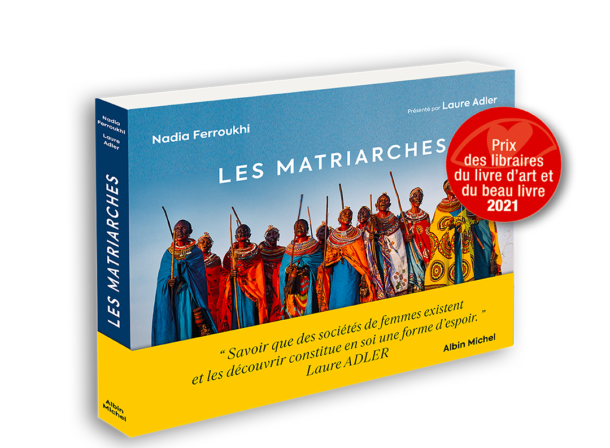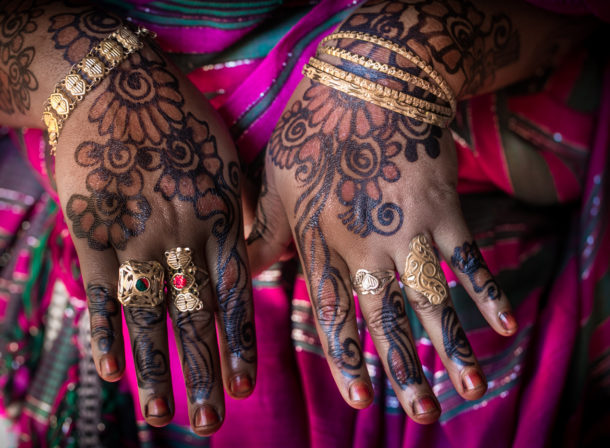Chocolate lovers consider Madagascar- grown cocoa to be among the finest in the world. In the region of Ambanja, on this island off Africa's east coast, grows the criollo variety, the oldest, rarest, sweetest, and most aromatic kind. Aztecs and Mayas enjoyed it as a nectar of the gods. But criollo is also the most fragile and least productive of the three cocoa varieties. The island’s climate is ideal for its cultivation, and its geographical isolation helps to protect the small evergreen trees from disease.
Still, Madagascar barely produces 0,01 % percent of the world's annual crop, and the fact that poor farmers often use child labor tarnishes cocoa's appeal in the eyes of the world. At least 280,000 children, most of them under age 14, work full time on cocoa plantations world-wide, according to a United Nations estimate. But besides chocolate, a notably positive effect of cocoa production here is that cocoa trees require the shade of a tall forest canopy. Its cultivation has thankfully spared northwestern Madagascar the deforestation that has denuded much of the rest of the island.
Towering at 330 meters above sea level, the two volcanic lakes of Mount Passo, near the plantations of Nosy Be, are sacred. Swimming and fishing are prohibited, an interdiction enforced by an abundance of crocodiles.
The female workers of Ambanja’s cocoa plantation are waiting for their group leader, Mary Madelene, to open the farm gate and start the day’s work. They barely survived on a salary of thirty euros a month.
Workers in one of the biggest and oldest cacao plantations cut pods open (each weighs about a pound) to extract 20 to 50 milky-white beans, which will then be fermented.
Aina extracts moist seeds from the pod. The white pulp called mucilage, has a delicious scent of litchis.
Cocoa trees are between 10 to 15 meters high, usually cut back to 6 or 8 meters. At age 3 it starts giving flowers, fruits and leaves throughout the year and reaches its full yield 6 to 7 years after planting. Its life span is up to 40 years.
Détail de 3 types différents de gousses et de fruits du cacaoyer, qui a presque le même aspect et le même goût que les litchis. Les criollos (1 à 5% de la production), les forastero (80-90% de la production) et les trinitarios (10 à 15% de la production).
Wooden containers are used for bean fermentation, which lasts from 3 to 6 days, depending on the type of pod. Fermentation should begin about 8 hours after cutting the pods open. The beans must be cleaned from the enveloping pulp.
Workers use rakes to spread fermented cacao beans as they dry in the sun. The beans must be raked regularly in order to dry quickly and evenly. This process takes eight to 15 days. Then they are stored away in a shed and kept in the shade. And once again spread in the sun.
Once brought out of the tanks, the beans are dried for an hour or two at most: too much sun would give them an unpleasant burnt flavour.
The warehouses of the plantation resonate of the sound of workers spinning the dried beans in the air. This sorting technique allows them to select the most beautiful beans. Stelivio separates the good from the bad beans.
After fermenting and drying, cacao beans are tossed to sort them and remove the bad beans. A very laborious work…The average plantation wage here is $42 per month.
This step consists of emptying the bags, to spread the beans again but this time inside, away from the light.
Just before being packed, the beans already exude subtle scent of cocoa. Fans spot without difficulty those of criollo, a mix mid-citrus mid-tobacco
Employees of Millot, a cacao grower here since 1904, buy cacao pods from independent farmers to augment their own crop. Millot then processes the pods into beans for export. Away from the streets of Ambanja, this man weighs the beans brought to him, which he buys for an average of one euro per kilo. In large plantations, the price varies between three to four euros. per kilo. In large plantations, the price varies between three to four euros.
Harvest time at an independent producer. Millot exploitation’s employees visit various villages several times a month to harvest the fruit of the cocoa pod. They then bring it back to their farm in order to process it through all the stages of fermentation, drying, sorting ... for export. Millot has sold a lot of its land and barely harvests its own pod, which is why they purchase from independent producers.
Bags of dried beans are labeled by hand. Small cacao farmers sell beans to cooperatives or large plantations for $1.40 to $2.80 per 130-pound bag. Chocolate makers then buy the bags of beans for as much as $5.50 each.
Pruning to guide or limit the development of a nod in the trees in order to optimise the trees’ energy resources. In this tropical paradise, no virus, bacterium or fungus ever attacked crops. However, being fragile, these cocoa trees need constant care.
The cocoa tree is between 10 to 15 meters high, usually cut to 6 or 8 meters. It flowers from 3 years on and gives flowers, fruits and leaves throughout the year. It reaches its full yield 6 to 7 years after planting and lives up to 40 years. Le cacaoyer mesure entre 10 et 15 mètres de haut, généralement coupé à 6 ou 8 mètres. Il fleurit à partir de 3 ans et donne des fleurs, des fruits et des feuilles tout au long de l'année. Il atteint son plein rendement 6 à 7 ans après la plantation et vit jusqu'à 40 ans. The pod grows directly on the trunk of the tree.
Most of the beans come from small plantations. Like that of Marie-Jeanne who, at 52, manages this very physical work on her own. She has a mother's affection for her trees. Every day, we must remove the gourmands, these twigs that grow on the trunks, so that they do not draw on the reserves of the trees.
This is one of only two chocolate factories in Madagascar. CINAGRA makes and sells chocolate at home – where it is a luxury item – as well as internationally.
La Chocolaterie La Maison Pralus in Roanne, France, shown here, acquired its own cacao plantation in Madagascar in order to control all the manufacturing steps of its high-end chocolate. Chocolate is becoming more popular in Asia now, particularly in China and Japan.





































































